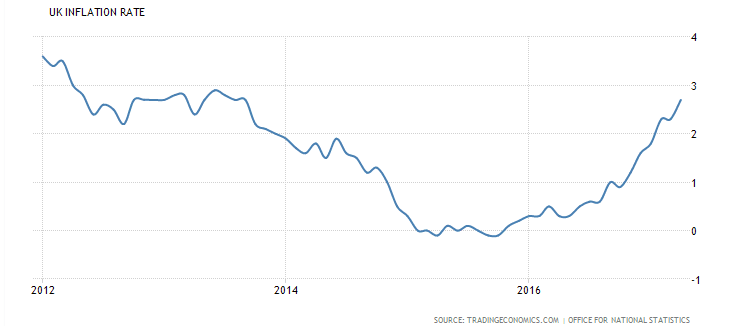Why travel and tourism companies must respond to change.
In this blog post, I will analyse the impacts of issues and trends that drive change in the travel and tourism sector, in addition to discussing the likely consequences of travel and tourism businesses failing to respond to market changes.
Maroto (2017) stated that “The global travel industry, and the way in which consumers experience it, is changing so dramatically that it requires a fundamental change to the way in which travel is sold and how the traveller is served.” Indeed, the level of changes that has hit the travel and tourism industry in the past 10-20 years has had a staggering impact on the way a company offers its products and services.
Thomas Cook (2013) stated that one of biggest trends in recent years that has shaped the travel and tourism industry was online growth.
“The growth of the internet has increased price transparency and choice, leading to a significant increase in the availability of travel products and services online, both through direct suppliers and travel intermediaries, and to a proliferation of information and reviews about travel experiences and destinations.” (Thomas Cook, 2013)
Dixon (2010) stated that market research can be considered somewhat of an outdated way to predict future trends, since customer’s emotions change very rapidly, and market research can only state what customers thought about undertaking last week, and not what customers would like to undertake at this current time. Therefore, travel companies should not rely exclusively on market research, instead, they should look at emerging trends, and imagine how customer’s needs will change once this emerging trend becomes widespread.
Internet usage has soared from 18 million users in 1995, to over 3 billion users as of March 2017 according to Internet Stats (2017). Many businesses in the travel and tourism industry have responded to this change by offering services such as Wi-Fi connectivity. According to Spangler (2017), 34% of hotel users stated that they find Wi-Fi connectivity to be the most important service when searching for a hotel. Spangler (2017) also stated that 87% of property owners admitted that technology plays a vital role in the customer’s choice of a hotel.
Another change which travel and tourism companies must respond to is inflation. The graph below provided by Trading Economics (2017) shows how inflation has changed in the past 5 years.

An article by Burn-Callander (2015) states that travel and tourism businesses must respond to inflation, by adjusting their prices accordingly. Burn-Callander (2015) also stated that although inflation impacts every travel and tourism business, SMEs (Small Medium Enterprises) are the ones which should be particularly careful. Failing to respond to inflation can cause a decrease in profits, in-turn threatening the company with bankruptcy.
An example of a company which has failed to respond to this change is Lowcostholidays. In July 2016, the company, originally founded in 2004, went into administration. The primary reason for this was due to a ‘turbulent economic climate hampering business activity’. This was partly due to the company selling holidays at lower prices than usual, hence their name, but failing to respond even partially to inflation, leading to a loss of income, and eventual bankruptcy (Wood and Bowers, 2016).
A report by The Air Travel Insolvency Protection Advisory Committee (ATIPAC, 2014) explains that another factor in Lowcostholiday’s downfall was the movement of their offices from the UK to the Balearic Islands. This move meant that they lost their ATOL protection status, and the report predicted that consumer confidence would decline in the company.
References
ATIPAC, 2014, Report highlights concerns over Lowcostholidays relocation, Available on: http://www.travelmole.com/news_feature.php?news_id=2012444, Accessed on: 08/06/17
Burn-Callander R, 2015, How does inflation affect a business?, The Telegraph, Available on: http://www.telegraph.co.uk/business/sme-home/low-inflation-business/, Accessed on: 04/06/17
Dixon P, 2010, Future of Travel Industry Google Travel and Tourism Conference Keynote by Futurist Dr Patrick Dixon, YouTube, Available on: https://www.youtube.com/watch?v=L1C1chw1I4U, Accessed on: 02/06/17
Internet Stats, 2017, Available on: http://www.internetworldstats.com/emarketing.htm, Accessed on: 03/06/17
Maroto L , 2017, Amadeus, Available on: http://www.amadeus.com/web/amadeus/en_1A-corporate/Amadeus-Home/Travel-trends/Travel-industry-trends/1319625740236-Page-AMAD_LandingPagePpal, Accessed on: 01/06/17
Spangler T, 2017, Broadband, Wi-Fi More Important Than Clean Underwear for Apartment Dwellers, Survey Finds, Variety, Available on: http://variety.com/2017/digital/news/broadband-wifi-laundry-survey-comcast-apartments-1202393580/, Accessed on: 03/06/17
Thomas Cook, Key Industry Trends, 2013, Available on: https://www.thomascookgroup.com/key-industry-trends/, Accessed on: 02/06/17
Trading Economics, 2017, UK Inflation Rate, Available on: https://tradingeconomics.com/united-kingdom/inflation-cpi, Accessed on: 04/06/17
Wood Z and Bowers S, 2016, Lowcostholidays goes into administration with warning to travellers, The Guardian, Available on: https://www.theguardian.com/business/2016/jul/15/lowcostholidays-administration-warning-travellers, Accessed on: 04/06/17
